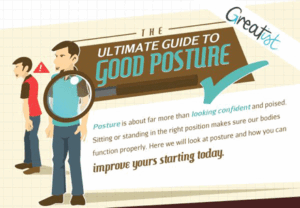Tips on “That” Tape
Over the past year or so, we have seen a heightened interest in “that cool looking tape” otherwise known as kinesiology tape. The tape has become more and more popular and is now even being sold in places like Target and City Sports. To weekend warriors, success with this new tape has been a bag of mixed reviews. Knowing the personal success I have encountered with taping my patients over the past 7 years, I thought a quick lesson on this taping method could clear up the most common questions I receive.
Question #1: Does this stuff really work?
 Yes! The tape DOES indeed work. A particular ‘application’ of the tape may be ineffective, but the tape, when applied correctly does in deed work. Even the most talented therapist can apply an application incorrectly due to a variety of reasons. If the benefits aren’t being felt almost immediately, the tape should be removed and re-applied with the correct adjustments made.
Yes! The tape DOES indeed work. A particular ‘application’ of the tape may be ineffective, but the tape, when applied correctly does in deed work. Even the most talented therapist can apply an application incorrectly due to a variety of reasons. If the benefits aren’t being felt almost immediately, the tape should be removed and re-applied with the correct adjustments made.
Question #2: How does it work?
Like most therapy solutions, the answer is ‘it depends’. The tape is one of the most versatile treatment tools a massage therapist can provide second to their own hands. The stronger the understanding a person has with anatomy, physiology and movement patterns, the more versatile the tape becomes in treating musculoskeletal issues. However, even some basic understanding can yield significant results.
Traditional tape you may have been accustomed too such as athletic taping that is primarily used to limit movement and splint joints. (For instance, most of us have had a sprained ankle taped up at some point!)
Kinesiology taping is quite the opposite. Kinesiology tape is applied in a manner that provides both stability and mobility to the tissues as well as assisting in promoting blood and lymph flow. How? At its core, the tape is used to reduce pain and inflammation by its ability to lift the skin. This slight lift to the area being taped allows our bodies natural healing abilities to work more efficiently because of the extra space it creates under the surface of the skin. By using only 10% of available stretch of the tape, it can help to relieve pressure that compress pain receptors under the skin as well as create space for lymph and blood to filter and replenish the injured area.
Unlike, the aforementioned athletic tape that has no stretch capabilities, kinesiology tape can stretch to 140% (similar to our muscles) of its resting length. When applied correctly, its primary uses are to either facilitate (excite) or inhibit (relax) a particular movement pattern. This is done with very little tension applied to the tape (15-30% of available stretch).
Question #3: How long does it last?
 Once again, the answer would be; “It depends”. Traditionally, once the tape is applied properly, it should be capable of maintaining its applied function for 3-4 days. The beauty of the tape is that it can be worn 24/7 providing around the clock therapy. Yes, it can even be worn in the shower or while you swim. I have several triathletes who will get taped on Friday before their Sunday races and report back the effectiveness of the taping. However, like I mentioned, the tape must be applied properly. This means that the area being treated must ALWAYS be cleaned properly with alcohol, removing any dirt or oils. Sorry Guys, if you are hairy you must shave. Taping over the hair eliminates the tapes primary functionality. Kinesiology tape’s effectiveness is in its ability to lift the skin, providing the appropriate lift, stretch and proprioceptive feedback to the brain.
Once again, the answer would be; “It depends”. Traditionally, once the tape is applied properly, it should be capable of maintaining its applied function for 3-4 days. The beauty of the tape is that it can be worn 24/7 providing around the clock therapy. Yes, it can even be worn in the shower or while you swim. I have several triathletes who will get taped on Friday before their Sunday races and report back the effectiveness of the taping. However, like I mentioned, the tape must be applied properly. This means that the area being treated must ALWAYS be cleaned properly with alcohol, removing any dirt or oils. Sorry Guys, if you are hairy you must shave. Taping over the hair eliminates the tapes primary functionality. Kinesiology tape’s effectiveness is in its ability to lift the skin, providing the appropriate lift, stretch and proprioceptive feedback to the brain.
Next, you must stretch/lengthen the area of the body being taped. (i.e. bring your heel back to your butt to stretch the front of your leg that is being taped) Your tape job will be ineffective otherwise. If you have done all the previous listed prep work BUT fail to activate the adhesive properties of the tape after you have laid it down with the appropriate amount of stretch on your clean, stretched skin, it will not last. Prior to moving the area being taped back to it original position you should gently rub over the tape with your hand to generate some heat, molding the adhesive to your body.
Last, I would like to say that in spite of versatility and capability of kinesiology tape, it is exponentially more effective when done in conjunction with other manual therapies such as massage or physical therapy. I have seen it be effective as a stand-alone therapy when used for minor issues, such as inflammation or postural assistance, but ideally its functionality is greatly enhanced when used as a part of a well-rounded program.
Bonus Question: Do only athletes use kinesiology tape?
Absolutely not! While kinesiology tape has gained a lot of popularity from the visibility of professional sports, everyone appreciates the benefits of kinesiology tape. The tape is applied to assist with or to provide relief for physically demanding activities, that can range from running/training for the Boston Marathon to working at a computer 40 hours a week. For instance, using the tape in conjunction with the relief you just felt from a massage that addressed your poor posture at the office can extend the benefit of your massage significantly. As an example, if your therapist has spent time working on tight muscles caused by leaning over your laptop as well as muscles that commonly break down from poor pasture, then the added assistance of the tape can provide desirable feedback to the brain, helping to maintain the benefits of the massage. Think of it as taking your therapists hands with you when you leave.
I hope I was able to provide a little insight about what some of the basics of kinesiology tape. As always, if you have questions or comments, please send them along and I will do my best to answer them. Until next month, keep moving and feel better!
Ready to #feelbetter?
You're just a click away from a wicked good massage!
-

60 Minute Massage Gift Card
$170.00 Add to cart -

90 Minute Massage Gift Card
$255.00 Add to cart -

Mini Aer Small Room Air Purifier
$149.00 Add to cart -
Sale!

Thera-Pearl Sports Pack/Hot Cold
Original price was: $14.99.$12.99Current price is: $12.99. Add to cart -

3 Somadome Sessions Gift Card
$135.00 Add to cart -

TheraBand CLX Connective Loop
$14.99 Select options -

6 Somadome Sessions Gift Card
$270.00 Add to cart -
Sale!

Biofreeze
Original price was: $14.99.$12.99Current price is: $12.99. Add to cart
Passion Mountain
I was at an event recently and was asked by somebody how I could STILL be so passionate for what I do. He said, “What I mean is that you talk about what you do with the passion of child flipping through a new pack of baseball cards. I wish I was that passionate about…
Read MoreFish You Should Scale Back On
New Englander’s love their seafood and we deepen our love affair every summer when our favorite crustaceans, ‘lobstah’ is a plentiful. But what is the best seafood for us and what are the ones that we should be staying away from regardless of how yummy they may be? Monterey Bay Aquarium has combined data from…
Read MoreSports are a Great Metaphor
It’s no secret that my life has always revolved around athletics. From my early days playing pop warner football, through my college years of lacrosse and on into the various community leagues since, being part of a team has always been where I feel most comfortable. What I enjoy most about being part of a…
Read MoreWhat is an Expert?
“An expert is someone widely recognized as a reliable source of technique or skill whose faculty for judging or deciding rightly, justly, or wisely is accorded authority and status by their peers or the public in a specific well-distinguished domain.” – Wikipedia This past month I flew to Atlanta to present a few classes in…
Read MoreThe Power of a Hug
Originally Posted 5/1/2014; following the 1 year anniversary of the Boston Marathon Bombings and our mission to rebound after these horrible attacks on our city. We helped orchestrate the ‘One Run for Boston’; a 3328.2 NON-STOP running relay from LA to Boston, raising over $500K for the victims and survivors of the events of 4/20/2013.…
Read MoreTips from the Table
Without fail, every marathon season, I am asked by my patients, what kind of advice I would offer up to them as they prepare to run the Boston marathon. I first admit that I have never (nor will ever) run a marathon, but given my unique insight of spending 1000’s of hours alone in a…
Read MoreShoulder Impingement
The glenohumeral joint is a highly complex articulation. It has the greatest range of motion of any joint in the body. However, its increased motion occurs at the expense of stability, requiring the soft tissues to play a more critical role in maintaining joint integrity. As a result of increased mechanical demands, numerous soft-tissue injuries…
Read MoreTrain, train, train. Train of fools.
In my seventeen years as a massage therapist, I am still amazed by some of the things I see in my office. Being situated 1/10th of a mile from the finish line of one of the most prestigious marathons in the world, the Boston Marathon, we see more than our fair share of runners coming…
Read MoreAchilles Tendon Disorder
Achilles Tendon Disorder Massage therapists see many clients with active lifestyles. Running, jumping, dancing, climbing, or any number of other activities can put serious stress on the Achilles tendon (AT). AT disorders also can contribute to biomechanical disorders in the foot and lower extremity. That is why it is important for the massage practitioner to…
Read More


